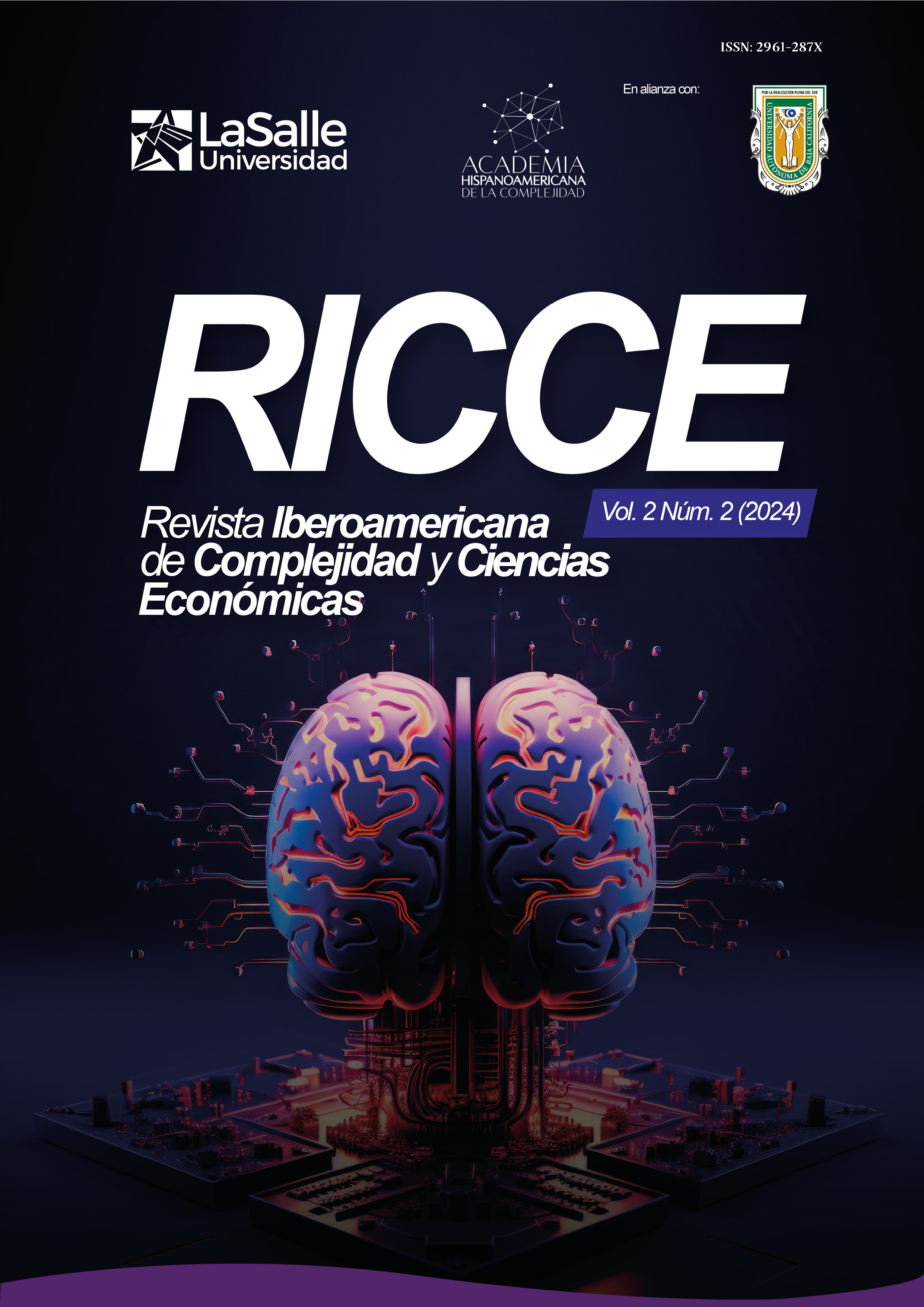COMPLEXITY, ARTIFICIAL INTELLIGENCE AND ETHICS
Abstract
The relationship between Artificial Intelligence (AI) and Complexity Sciences is increasingly crucial in the scientific and technological fields. This essay examines how AI and Complexity Sciences mutually benefit each other and promise to revolutionize our understanding of complex systems. Complexity Sciences investigate how interactions among parts of a system generate emergent behaviors that are not predictable from the individual components, encompassing ecological networks, economies, biological, and social systems. AI, with algorithms capable of performing tasks that require human intelligence, such as learning and adaptation, significantly contributes to this field. Complexity Sciences provide a theoretical framework for developing more advanced and adaptive AI, crucial for autonomous systems in dynamic environments. However, this synergy also poses novel ethical and social challenges, necessitating the application of complex criteria to AI ethics.
Downloads
References
Agrawal, R., Imieliński, T., & Swami, A. (1993). “Mining association rules between sets of items in large databases”. Proceedings of the 1993 ACM SIGMOD International Conference on Management of Data, 207-216. DOI: https://doi.org/10.1145/170035.170072
Barabási, A. L. (2003). Linked: How Everything Is Connected to Everything Else and What It Means for Business, Science, and Everyday Life. Penguin.
Bar-Yam, Y. (2003). Dynamics of Complex Systems. Westview Press.
Bostrom, N. (2014). Superintelligence: Paths, Dangers, Strategies. Oxford University Press.
Brambilla, M., Ferrante, E., Birattari, M., & Dorigo, M. (2013). “Swarm robotics: a review from the swarm engineering perspective”. Swarm Intelligence, 7(1), 1-41. DOI: https://doi.org/10.1007/s11721-012-0075-2
Bryson, J. J., & Theodorou, A. (2019). “How society can maintain human-centric artificial intelligence”. In Human-Centered Digitalization and Services (pp. 305-323). Springer. DOI: https://doi.org/10.1007/978-981-13-7725-9_16
Camazine, S., Deneubourg, J. L., Franks, N. R., Sneyd, J., Theraulaz, G., & Bonabeau, E. (2003). Self-Organization in Biological Systems. Princeton University Press.
Chen, J., Li, Y., & He, K. (2018). “Reinforcement Learning in Financial Markets”. The Journal of Finance and Data Science, 4(1), 1-8. DOI: https://doi.org/10.1016/j.jfds.2015.03.001
Dorigo, M., & Stützle, T. (2004). Ant Colony Optimization. MIT Press. DOI: https://doi.org/10.7551/mitpress/1290.001.0001
Dorigo, M., Birattari, M., & Stutzle, T. (2006). “Ant Colony Optimization: Artificial Ants as a Computational Intelligence Technique”. IEEE Computational Intelligence Magazine, 1(4), 28-39. DOI: https://doi.org/10.1109/CI-M.2006.248054
Doshi-Velez, F., & Kim, B. (2017). “Towards a rigorous science of interpretable machine learning”. arXiv:1702.08608.
Floridi, L. (2019). The Logic of Information: A Theory of Philosophy as Conceptual Design. Oxford University Press. DOI: https://doi.org/10.1093/oso/9780198833635.001.0001
Floridi, L., & Cowls, J. (2019). “A unified framework of five principles for AI in society”. Harvard Data Science Review, 1(1). DOI: https://doi.org/10.1162/99608f92.8cd550d1
Goertzel, B., & Pennachin, C. (2007). Artificial General Intelligence. Springer. DOI: https://doi.org/10.1007/978-3-540-68677-4
Goodfellow, I., Bengio, Y., & Courville, A. (2016). Deep Learning. MIT Press.
Holland, J. H. (1992). Adaptation in Natural and Artificial Systems. MIT Press. DOI: https://doi.org/10.7551/mitpress/1090.001.0001
Holland, J. H. (2014). Complexity: A Very Short Introduction. Oxford University Press. DOI: https://doi.org/10.1093/actrade/9780199662548.001.0001
Kennedy, J., & Eberhart, R. (1995). “Particle swarm optimization”. Proceedings of ICNN'95 - International Conference on Neural Networks, 4, 1942-1948. DOI: https://doi.org/10.1109/ICNN.1995.488968
Kitchin, R. (2014). The Data Revolution: Big Data, Open Data, Data Infrastructures and Their Consequences. Sage. DOI: https://doi.org/10.4135/9781473909472
LeCun, Y., Bengio, Y., & Hinton, G. (2015). “Deep learning”. Nature, 521(7553), 436-444. DOI: https://doi.org/10.1038/nature14539
Mitchell, M. (2009). Complexity: A Guided Tour. Oxford University Press. DOI: https://doi.org/10.1093/oso/9780195124415.001.0001
Mittelstadt, B. D., Allo, P., Taddeo, M., Wachter, S., & Floridi, L. (2016). “The ethics of algorithms: Mapping the debate”. Big Data & Society, 3(2). DOI: https://doi.org/10.1177/2053951716679679
Newman, M. (2010). Networks: An Introduction. Oxford University Press. DOI: https://doi.org/10.1093/acprof:oso/9780199206650.003.0001
Noble, S. U. (2018). Algorithms of Oppression: How Search Engines Reinforce Racism. NYU Press. DOI: https://doi.org/10.2307/j.ctt1pwt9w5
Page, S. E. (2007). The Difference: How the Power of Diversity Creates Better Groups, Firms, Schools, and Societies. Princeton University Press. DOI: https://doi.org/10.1515/9781400830282
Provost, F., & Fawcett, T. (2013). Data Science for Business: What You Need to Know about Data Mining and Data-Analytic Thinking. O'Reilly Media.
Reichstein, M., Camps-Valls, G., Stevens, B., Jung, M., Denzler, J., Carvalhais, N., & Prabhat (2019). “Deep learning and process understanding for data-driven Earth system science”. Nature, 566(7743), 195-204. DOI: https://doi.org/10.1038/s41586-019-0912-1
Schellnhuber, H. J. (1999). “Earth system analysis and the second Copernican revolution”. Nature, 402(6761), C19-C23. DOI: https://doi.org/10.1038/35011515
Sutton, R. S., & Barto, A. G. (2018). Reinforcement Learning: An Introduction. MIT Press.
Taleb, N. N. (2012). Antifragile: Things That Gain from Disorder. Random House.
Copyright (c) 2024 Iberoamerican Journal of Complexity and Economics Sciences

This work is licensed under a Creative Commons Attribution-NonCommercial-NoDerivatives 4.0 International License.
The authors transfer exclusively the right to publish their article to the Iberoamerican Journal of Complexity and Economics Sciences, which may formally edit or modify the approved text to comply with its own editorial regulations and with universal grammatical standards, before its publication; Likewise, our journal may translate the approved manuscripts into as many languages as it deems necessary and disseminate them in various countries, always giving public recognition to the author or authors of the research.









